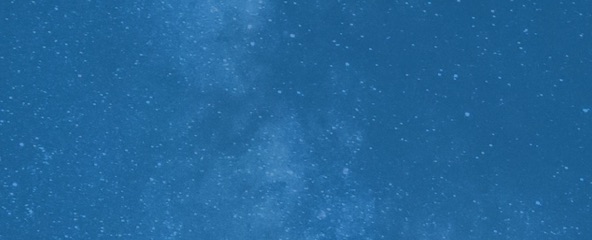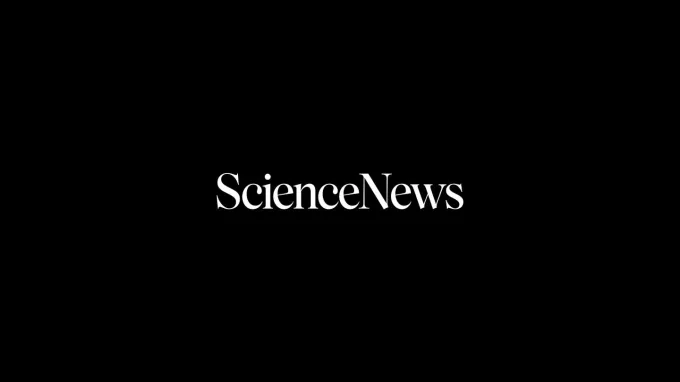Science News Magazine: Current Issue
Vol. 177 No. #2
Trustworthy journalism comes at a price.
Scientists and journalists share a core belief in questioning, observing and verifying to reach the truth. Science News reports on crucial research and discovery across science disciplines. We need your financial support to make it happen – every contribution makes a difference.
More Stories from the January 16, 2010 issue
-
 Health & Medicine
Health & MedicineNearsightedness increasing in the United States
A new study suggests that myopia has increased by more than 60 percent since the 1970s.
By Nathan Seppa -
 Earth
EarthIrrigation draining California groundwater at ‘unsustainable’ pace
The GRACE satellites have tracked water movement from the Central Valley since 2003.
By Sid Perkins -
 Life
LifeVirus makes plants lie to insects
Infected squash plants smell delicious but taste terrible – perfect combination for tricking aphids into spreading disease
By Susan Milius -
 Space
SpaceSuper-Earth found close by, may host water
Astronomers say this discovery and others suggest that finding habitable planets is 'only a matter of time.'
-
 Earth
EarthFor coots, hatching order is crucial ID
When birds sneak eggs into others' nest, mom and dad can learn to find their own.
-
 Health & Medicine
Health & MedicineGene variant may help against emphysema, asthma
Uncommon version seems to lessen risk of lung disease in smokers.
By Nathan Seppa -
 Physics
PhysicsFrozen light stays fresh longer
Researchers have trapped light in an ultracold cloud of atoms for 1.5 seconds.
-
 Climate
ClimateCarbon dioxide: Blame where blame is due?
Blog: Measuring outsourcing of greenhouse gases. From the annual meeting of the American Geophysical Union.
By Sid Perkins -
 Earth
EarthCameras catch underwater volcano in the act
Seafloor eruption in the South Pacific is the deepest and most violent yet seen.
By Sid Perkins -
 Life
LifeDo-it-yourself bed-bug detector
With bed-bug numbers on the rise in North America, researchers test homemade bug finders.
By Susan Milius -
 Space
SpaceHerschel Space Observatory sees stars being born
A recently launched infrared observatory has discovered about 700 newly forming stars.
By Ron Cowen -
 Life
LifeGroovy teeth suggest dinosaur was venomous
Fossils show depression in upper jaw that held venom-producing glands.
By Sid Perkins -
 Life
LifeLupus not identical in twins
Differences in DNA methylation may account for why one sibling gets the autoimmune disease while the other stays healthy.
-
 Space
SpaceStay tuned: New star coming in 1 million years
Radio observations of a dark, dusty cloud in a nearby star-forming region have revealed one of the earliest phases of star formation and may reveal new insights on starbirth.
By Ron Cowen -

Science Future for January 16, 2010
February 4–5 Annual meeting of the American Association of Behavioral and Social Sciences occurs in Las Vegas. See aabss.org February 13–17 The American Physical Society and American Association of Physics Teachers meet in Washington, D.C. See www.aps.org March 17 Human origins exhibit premieres at the National Museum of Natural History in Washington, D.C. See humanorigins.si.edu
By Science News -

Toward the Healthy City: People, Places, and the Politics of Urban Planning by Jason Corburn
City planners could increase health equity by considering environmental and public health issues during urban redevelopment. MIT Press, 2009, 282 p., $24. TOWARD THE HEALTHY CITY: PEOPLE, PLACES, AND THE POLITICS OF URBAN PLANNING BY JASON CORBURN
By Science News -

Engineering Invention: Frank J. Sprague and the U.S. Electrical Industry by Frederick Dalzell
The inventor and entrepreneur worked for Edison before coming up with the electric railway and electric elevator. MIT Press, 2009, 288 p., $30. ENGINEERING INVENTION: FRANK J. SPRAGUE AND THE U.S. ELECTRICAL INDUSTRY BY FREDERICK DALZELL
By Science News -

Life Along the Inner Coast by Robert L. Lippson and Alice Jane Lippson
Southeast waterways host tremendous diversity, described in this field guide by two naturalists. University of North Carolina Press, 2009, 454 p., $35. LIFE ALONG THE INNER COAST BY ROBERT L. LIPPSON AND ALICE JANE LIPPSON
By Science News -

Jump into Science: Active Learning for Preschool Children by Rae Pica
Science education starts early through experiments that keep kids moving. JUMP INTO SCIENCE: ACTIVE LEARNING FOR PRESCHOOL CHILDREN BY RAE PICA Gryphon House, 2009, 131 p., $14.95.
By Science News -

Book Review: Megadisasters: The Science of Predicting the Next Catastrophe by Florin Diacu
Review by Kristina Bartlett Brody.
By Science News -

Book Review: Danger to Self: On the Front Line with an E.R. Psychiatrist by Paul R. Linde
Review by Rachel Zelkowitz.
By Science News -

Powering the national labs as engines of discovery
In May 2009, University of Chicago physicist Eric D. Isaacs took the helm of the Department of Energy’s Argonne National Laboratory near Chicago. Earlier in his career, Isaacs spent 13 years at Bell Laboratories, where he directed semiconductor and materials physics research. Recently, Science News senior editor Janet Raloff spoke with Isaacs about ways to […]
-

On the Fringe
Astronomers look to the Kuiper belt for clues to the solar system’s history.
By Ron Cowen -

-

-

Letters
Well-tooled apes The fascinating article “Aping the Stone Age” (SN: 11/21/09, p. 24) led me to wonder whether researchers who work with chimps or other higher apes have ever introduced them to the modern tools used by humans, such as saws, axes, hammers or pliers. If so, it would be interesting to know whether the […]
By Science News -

Science Past from the issue of January 16, 1960
MEN TO MARS POSSIBLE IN 60’S, EXPERTS SAY — The United States will be able to send three men on a 14-month expedition to Mars in a nuclear-powered two-stage rocket ship during the 1960’s, three space experts assert. The rocket ship would go into orbit around Mars, and the exploring party would use a chemically […]
By Science News -

The Double Helix and the Law of Evidence by David H. Kaye
A legal scholar describes the history and future of DNA-based evidence in the American justice system. Harvard University Press, 2010, 330 p., $45. THE DOUBLE HELIX AND THE LAW OF EVIDENCE BY DAVID H. KAYE
By Science News
